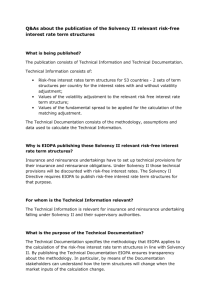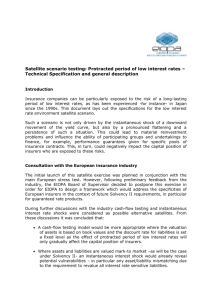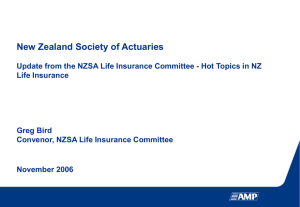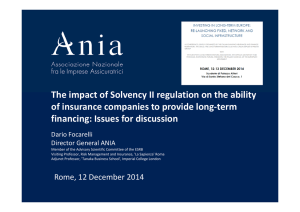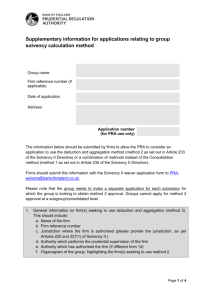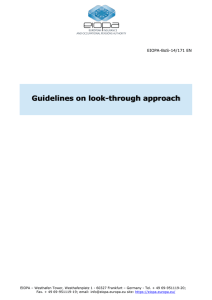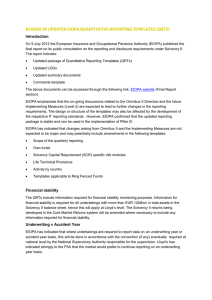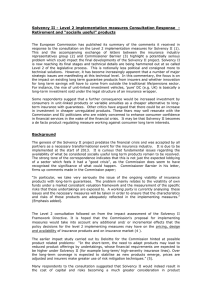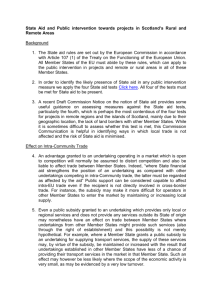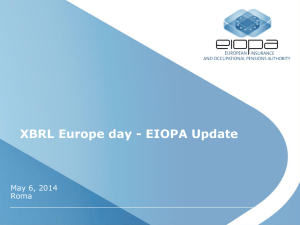WiFi_locandina
advertisement
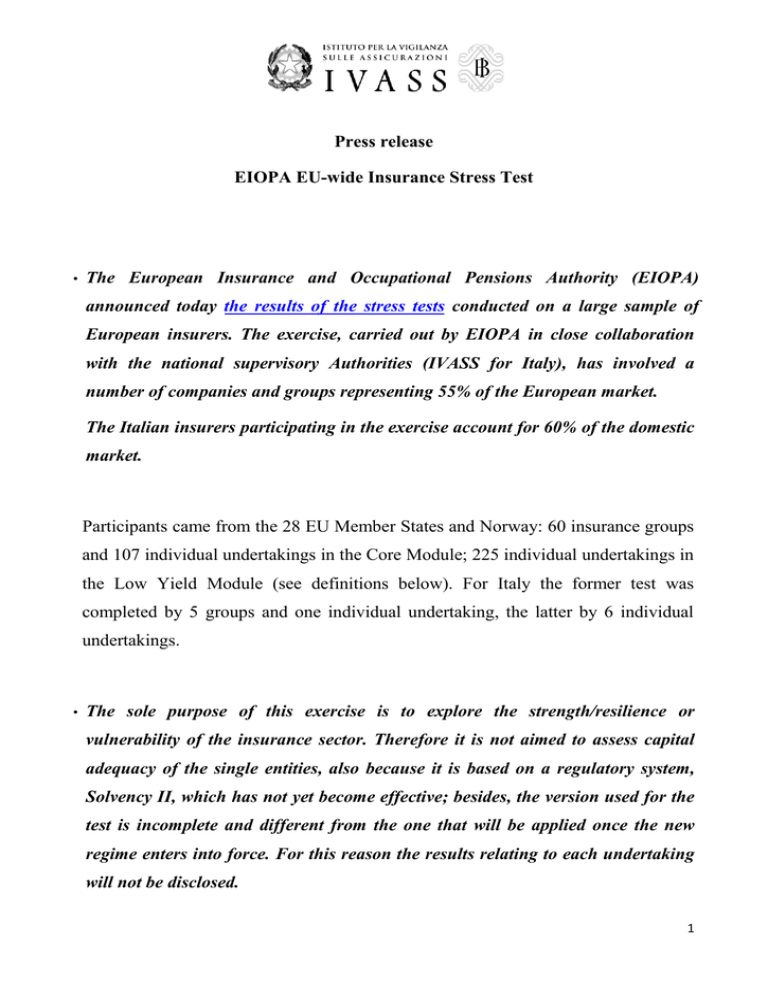
Press release EIOPA EU-wide Insurance Stress Test • The European Insurance and Occupational Pensions Authority (EIOPA) announced today the results of the stress tests conducted on a large sample of European insurers. The exercise, carried out by EIOPA in close collaboration with the national supervisory Authorities (IVASS for Italy), has involved a number of companies and groups representing 55% of the European market. The Italian insurers participating in the exercise account for 60% of the domestic market. Participants came from the 28 EU Member States and Norway: 60 insurance groups and 107 individual undertakings in the Core Module; 225 individual undertakings in the Low Yield Module (see definitions below). For Italy the former test was completed by 5 groups and one individual undertaking, the latter by 6 individual undertakings. • The sole purpose of this exercise is to explore the strength/resilience or vulnerability of the insurance sector. Therefore it is not aimed to assess capital adequacy of the single entities, also because it is based on a regulatory system, Solvency II, which has not yet become effective; besides, the version used for the test is incomplete and different from the one that will be applied once the new regime enters into force. For this reason the results relating to each undertaking will not be disclosed. 1 The financial soundness of the insurers was tested by means of a baseline exercise, under which the capital requirements were recalculated according to Solvency II (but based on an incomplete version of those rules, as already explained), and then on two stress tests, both very severe. The first one, called Core Stress Test, hypothesized two scenarios: 1) the market is hit by financial shocks of different kind and severity (decrease in asset values, significant increase in spreads on government and corporate bonds); 2) there is a sudden deterioration of insurance-specific risk factors, both in the life (e.g. mass lapse), and non-life sectors (e.g. natural catastrophes). These scenarios were first of all applied to insurance groups, including multi-national groups. The second stress test, called Low Yield, was based on two scenarios: the “Japanese-like” one, with persistent low interest rates environment and the “Inverse” one, with a sudden reverse in the interest rate curve so that rates on shorter maturities become higher than rates on longer maturities. This exercise, which was intended to test the sustainability over time of the guarantees offered for life products, was applied only to individual undertakings and not to groups. Both tests were based on data at end 2013. The capital requirement was calculated on the basis of the standard formula envisaged by Solvency II, therefore not assuming the use of “internal models” and/or of “undertakings’ specific parameters”, envisaged under Solvency II to calibrate the capital requirement to the undertaking’s own risk profile. 2 • The results show that the Italian sector is sufficiently capitalized looking forward at Solvency II: under stress it ranks slightly below the European average in the Core scenario, while it performs better than the European average under the low yield scenario. Under the baseline scenario all the Italian entities participating in the exercise fulfilled the future capital requirements imposed by Solvency II, compared to 86% of the whole European sample. Under the most severe scenario of financial shocks envisaged by the Core Stress Test, half of the Italian insurers would still meet the capital requirements in Solvency II terms (compared to 56% of the whole European sample). Under the “Japanese-like” low yield Stress Test 83% of Italian insurers would still meet the capital requirement (76% of the whole European sample), also thanks to a better match in duration and returns between assets and liabilities. • The findings of the stress tests have provided important indications for supervisory activities also in our country, in accordance with EIOPA’s Recommendations; IVASS will draw on these indications to ensure a smooth transition to the new regime and to strengthen, where necessary, the safeguards for the management and control of undertakings’ risks. 3
